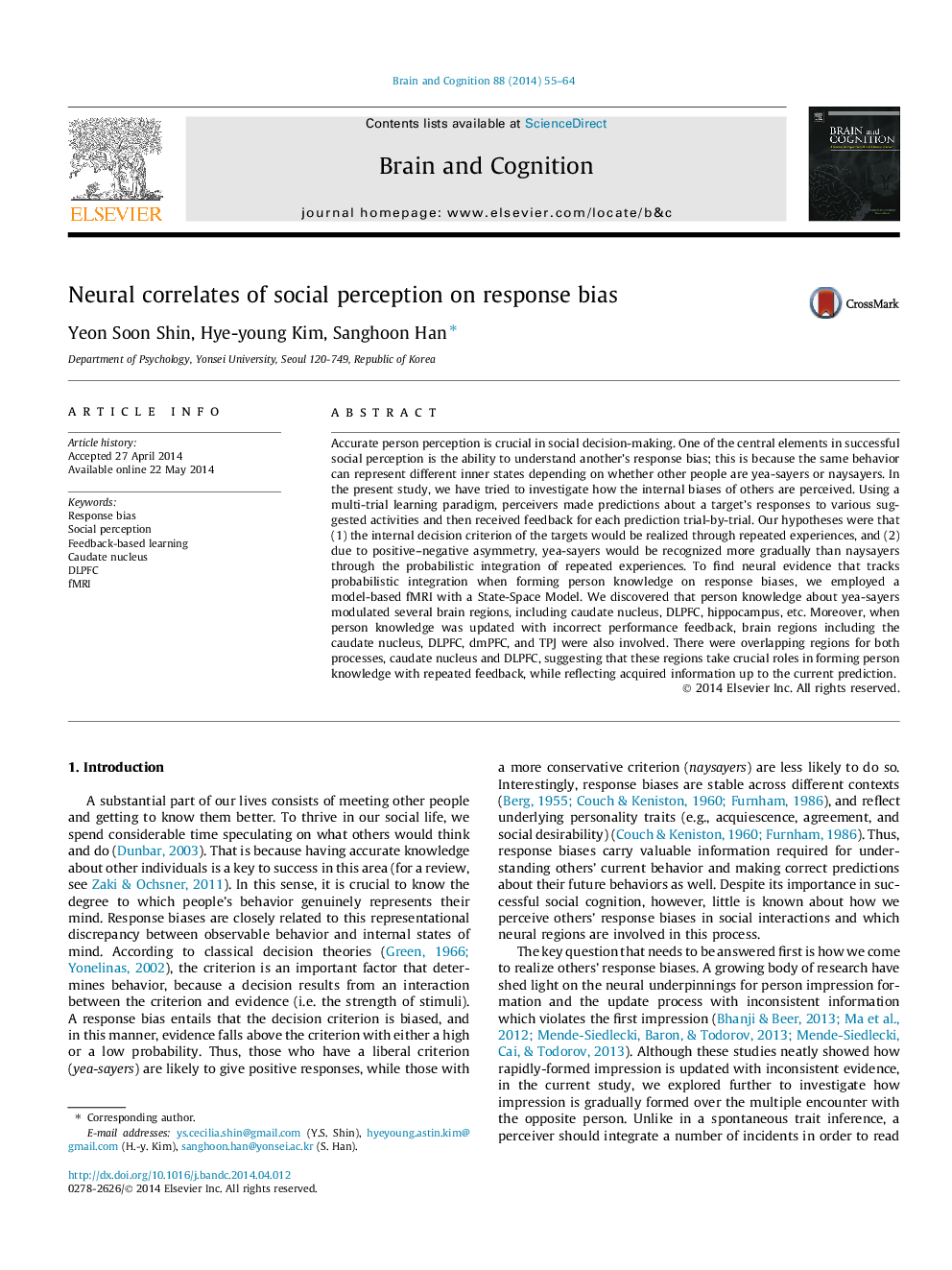| Article ID | Journal | Published Year | Pages | File Type |
|---|---|---|---|---|
| 924513 | Brain and Cognition | 2014 | 10 Pages |
Accurate person perception is crucial in social decision-making. One of the central elements in successful social perception is the ability to understand another’s response bias; this is because the same behavior can represent different inner states depending on whether other people are yea-sayers or naysayers. In the present study, we have tried to investigate how the internal biases of others are perceived. Using a multi-trial learning paradigm, perceivers made predictions about a target’s responses to various suggested activities and then received feedback for each prediction trial-by-trial. Our hypotheses were that (1) the internal decision criterion of the targets would be realized through repeated experiences, and (2) due to positive–negative asymmetry, yea-sayers would be recognized more gradually than naysayers through the probabilistic integration of repeated experiences. To find neural evidence that tracks probabilistic integration when forming person knowledge on response biases, we employed a model-based fMRI with a State-Space Model. We discovered that person knowledge about yea-sayers modulated several brain regions, including caudate nucleus, DLPFC, hippocampus, etc. Moreover, when person knowledge was updated with incorrect performance feedback, brain regions including the caudate nucleus, DLPFC, dmPFC, and TPJ were also involved. There were overlapping regions for both processes, caudate nucleus and DLPFC, suggesting that these regions take crucial roles in forming person knowledge with repeated feedback, while reflecting acquired information up to the current prediction.
